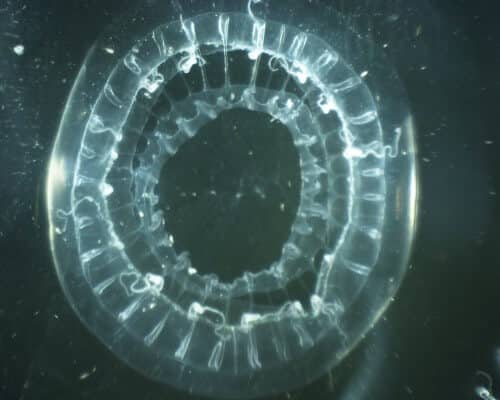Wednesday, April 13, at 19:00 at the Israel National Academy of Sciences, 43 Jabotinsky St. in Jerusalem

Professor Menachem Goren, Professor Bela Galil and Dr. Noa Shankar will speak and talk at the fifth meeting of the series of meetings for the general public "at the gates of the academy", this year dealing with immigration. The meeting will be moderated by Academy of Sciences member Prof. Yossi Levia from Tel Aviv University.
Prof. Menachem Goren will lecture on an ancient sea - a new living world. The rate of migration of foreign species to the Mediterranean Sea is increasing, and the fauna there, especially in the East, is changing rapidly. The number of foreign fish species already exceeds 150. The eastern Mediterranean has biologically become an extension of the Red Sea, and the proportion of native fish in it is decreasing. This affects the food web in the sea and we are witnessing the formation of a new and very different web from the previous one. These changes have economic consequences, and there is an urgent need to investigate and understand their causes. Prof. Menachem Goren is a researcher in the Department of Zoology at Tel Aviv University and a member of the Steinhardt Museum of Nature at the university. marine biologist for over 45 years; Mainly deals with the taxonomy and biology of fish in the Mediterranean Sea, Red Sea and internal water bodies (rivers and the Sea of Galilee) as well as issues of interface and preservation of these habitats.
Prof. Bla Galil will show that in addition to the Suez Canal being an important trade route, it also allows the passage of Red Sea animals to the Mediterranean Sea. Over 450 invasive species, including fish, jellyfish, crabs and molluscs, have settled on Israel's shores and some have caused ecological, economic and health damage. The jellyfish cause heavy damage to fishing nets, clog infrastructure facilities such as power plants and desalination plants and sting bathers. Poisonous and venomous fish harm bathers and fishermen. The intrusion of foreign species harms the fauna and flora of the Mediterranean Sea more than any other factor related to human activity, including pollution. The widening and deepening of the Suez Canal together with climate change have in recent decades led to increased invasion and worsening damage to the Mediterranean Sea, because the warming has given an advantage to species that came from the Red Sea. Already today some of the species have managed to establish themselves in large areas of the Mediterranean Sea and have even reached the Straits of Gibraltar. Prof. Bela Galil is a researcher at the National Institute of Oceanography. She specialized in background surveys and monitoring the substrate companies in contaminated sites and at the same time engaged in systematic studies during which she described many types and species new to science.
Dr. Noa Shankar will talk about hidden passengers in the marine environment. The Mediterranean coast of the State of Israel serves as a fertile ground for research on maritime invasions. One of the less researched groups in this field is the group of Iztelans, animals that cause millions of dollars worth of damage around the world. As invertebrates that filter tiny particles, the sea urchins are an important ecological component of the marine environment and even teach us about its health. But since they are characterized by a fast growth rate, the Iztelans compete with other sedentary animals for any available hard substrate. The common assumption is that the effective way to deal with the outbreak of invasive species is early detection and a quick response. In the present study, we discovered that the most effective way for early detection is surveys in ports and marinas. Cooperation with civilian and military shipyards in Israel showed that vessels play a central role in the distribution of stilts in the Mediterranean and that the nature of their maintenance has a decisive effect on this process. Such discoveries contribute to the understanding of the reasons for the success of invasions in the marine environment and help to develop interface tools to effectively deal with these species. Dr. Noa Shankar is a marine biologist from the Department of Zoology and the Steinhardt Museum of Nature at Tel Aviv University.
Prof. (Emeritus) Yossi Loya is from the Department of Zoology at Tel Aviv University and a member of the Israel National Academy of Sciences. He is one of the first-class scientists in the world dealing with ecology and the preservation of the marine environment.
The series of lectures "at the gates of the academy" was initiated by the president of the academy, Prof. Neely Cohen, with the aim of making new and fascinating topics in science accessible to the general public. Prof. Cohen emphasized that in the spirit of the words of the Academy's first president, Prof. Martin Buber, we are committed to strengthening the values of learning and excellence in Israeli society.
